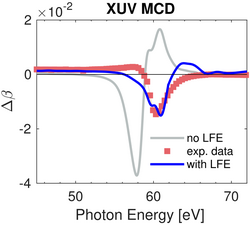The study of the interaction between light and matter is one of the most powerful ways to help physicists to understand the microscopic world. In magnetic materials, a wealth of information can be retrieved by optical spectroscopy where the energy of the individual light particles - photons - promotes inner shell electrons to higher energies. This is because such an approach allows to obtain the magnetic properties separately for the different types of atoms in the magnetic material and enables scientists to understand the role and interplay of the different constituents. This experimental technique, called X-ray magnetic circular dichroism (XMCD) spectroscopy, has been pioneered in the late 1980ties and typically requires a large-scale facility - a synchrotron radiation source or x-ray laser.
To investigate how magnetization responds to ultrashort laser pulses – the fastest way to deterministically control magnetic materials - smaller-scale laboratory sources have become available in recent years delivering ultrashort pulses in the extreme ultraviolet (XUV) spectral range. XUV photons, being less energetic, excite less strongly bound electrons in the material, posing new challenges for the interpretation of the resulting spectra in terms of the underlying magnetization in the material.
